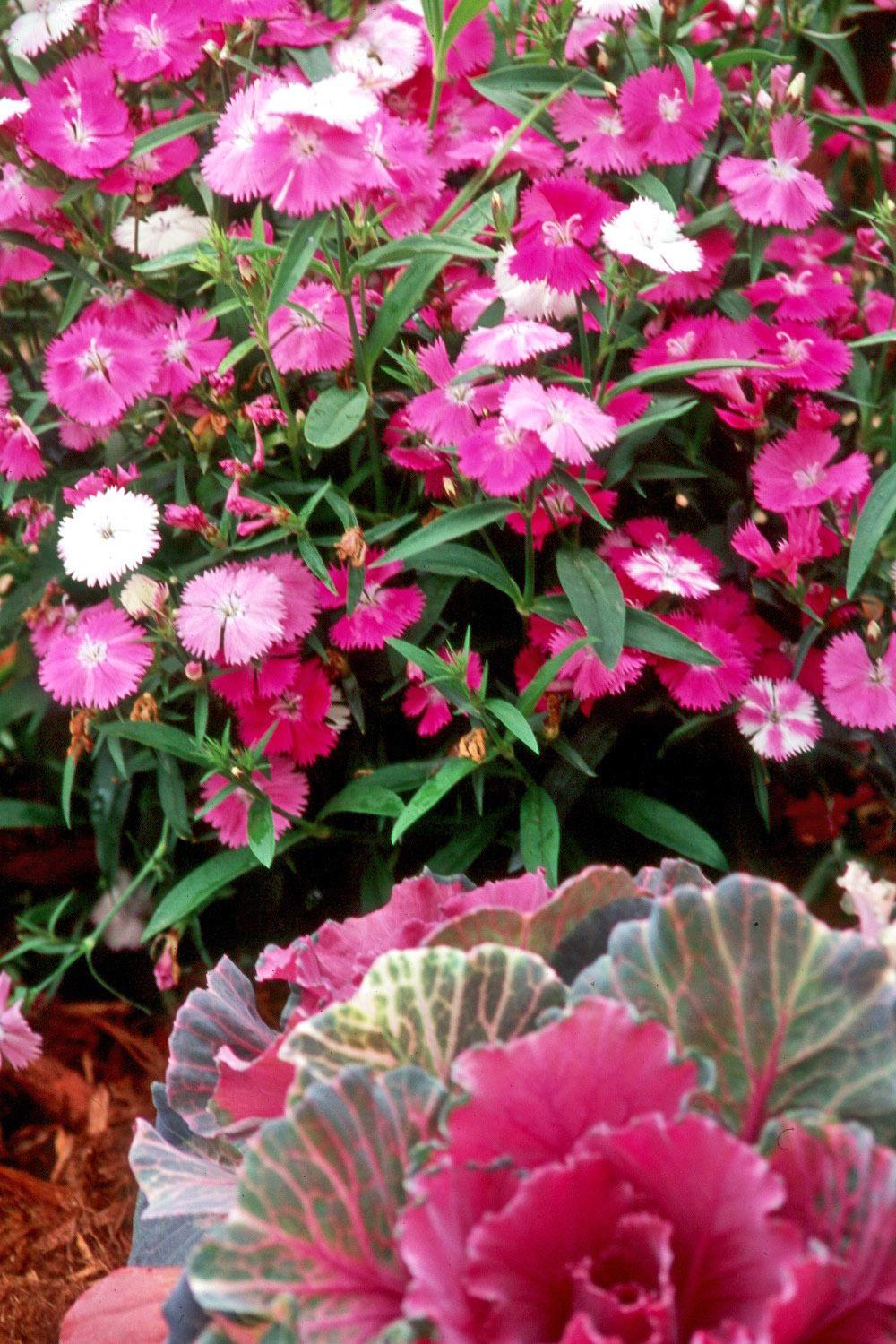Information Possibly Outdated
The information presented on this page was originally released on November 10, 2005. It may not be outdated, but please search our site for more current information. If you plan to quote or reference this information in a publication, please check with the Extension specialist or author before proceeding.
New dianthus varieties promise to add dazzle
By Norman Winter
MSU Horticulturist
Central Mississippi Research & Extension Center
Just when you thought dianthus had reached its peak, up pops more great new varieties like Diamond and Dynasty.
The Diamond is being brought to us by Sakata Seed and is available in some rare colors for dianthus. There are Blush Pink, Carmine Rose, Coral, Pink, Purple, Scarlet and a mix. This range of colors really allows for some interesting, cool-season combinations.
The Dynasty is being provided by Pan American Seed, which has become known in recent years for their Bouquet Purple and Amazon series. Dynasty is a tall, double-flowered series that will remind you of small carnations. It is available in six colors and a mix. One of the most striking colors is Orchid. When I say it is tall, I am talking about 16 to 20 inches.
Like all fairly new plants, your favorite garden center may be sold out. They still should have a lot of other good choices like the Telestar series, which was chosen as a Louisiana Select award winner, and the Ideal series, which has proven the best in University of Georgia trials.
Ideal Carmine and Ideal Rose were chosen as Flueroselect Quality Mark winners. Ideal Violet was chosen as an All-America Selections award winner. The Melody series offers several choices, and the Melody Pink was chosen as an All-America Selections winner.
The Bouquet Purple dianthus, a Mississippi Medallion award winner and a true perennial, is still my pick. The Amazon dianthus, which was the cutflower of the year award winner, can't be passed up either. You see the dilemma: we are loaded with great new dianthus.
The dianthus prefers well-drained, well-worked beds rich in organic matter. When preparing a bed, incorporate 2 pounds of a slow-release, 12-6-6-fertilizer with minor nutrients per 100 square feet of bed space. Give them plenty of sun to enable them to bloom to their potential. Plant at the same depth they are growing in the container in the fall or spring, spacing plants 6 to 8 inches apart.
Lightly side dress with fertilizer once a month to keep them growing and producing. Keep your dianthus mulched to conserve moisture, deter weed growth and give added cold protection. Mulch also keeps summer soil temperatures cooler, increasing your chances of keeping them around for multiple years. Deadhead old blossoms to keep the plant looking tidy and the flower stems coming.
Since we appear to be a little rain challenged, pay attention to these and other fall-planted flowers, and give them a good soaking as needed. This will pay dividends until the rains return.
Dianthus colors allow for partnering with cool-season crops like pansies, violas, snapdragons, and flowering kale or cabbage. Try growing taller selections behind Purple Rain pansy or True Blue Panola. They also offer the opportunity to combine with spring flowering daisies or coreopsis.
I was at one of our grower's places recently, and the dianthus have never looked better. Even though it is November, you can plant the cool-season warriors with complete piece of mind knowing you are soon to have the showiest garden in the neighborhood.









